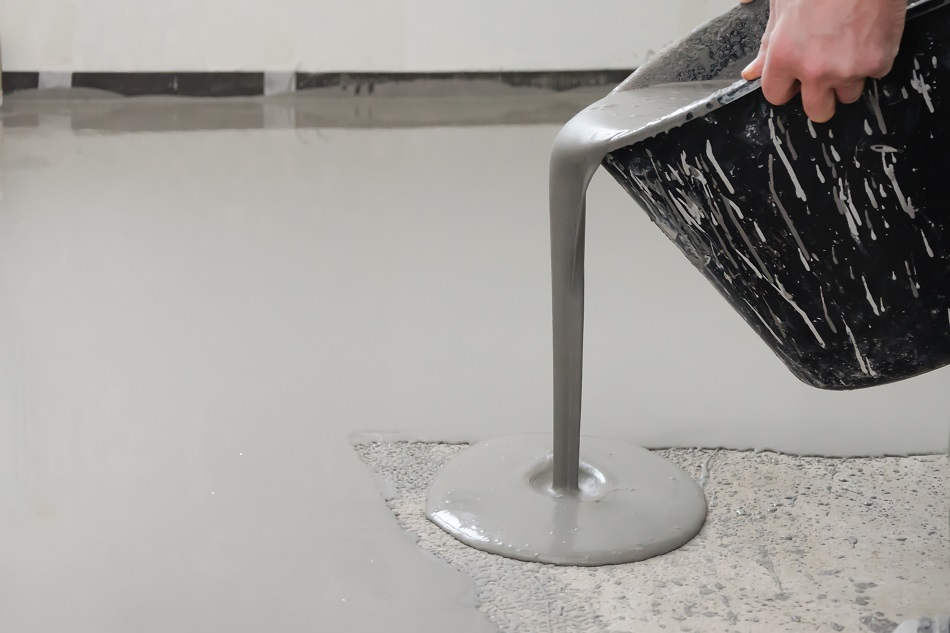
Image Credit: T.SALAMATIK/Shutterstock.com
LIBS is a high-energy, but minimally to non-destructive, analytical technique that takes operation principles from other emission spectroscopy methods. LIBS has been used to identify the chemical constituents of many different materials in quick time, including identifying the lighter elements in a sample not possible with some other methods. In this article, we look at how LIBS is used to analyze cement.
What is LIBS?
LIBS is a high-energy spectroscopy method that uses a short-pulsed high energy laser to excite samples, so they form a plasma (technically a microplasma with regards to the size). It is a method that takes principles from atomic emission spectroscopy (AES) and optical emission spectroscopy (OES) and is used to analyze the chemical constituents of a sample.
For the focus of this article, it is cement, but the analysis can be performed on many samples, including semiconductors, foodstuffs, coatings, soil samples, plastics, and biological samples.
LIBS is a minimally destructive to non-destructive technique as only a very small section of the sample is atomized, which are the points where the laser is specifically focused. The laser heats the specific spots on the sample surface, causing it to atomize.
This atomization causes a plasma to form, but when the plasma specifically forms is dependent on several factors, including the optical breakdown threshold, the analysis environment, and the material.
The formation of plasma causes the atoms to enter a higher energetic state, so when the plasma cools down, each element gives off a characteristic wavelength—i.e. a wavelength of light that has a spectral peak characteristic to that particular element.
These emissions can then be analyzed, enabling the chemical composition of the sample to be determined. In theory, LIBS can use these emissions to characterize every element in the sample, however, in real-world analyses, LIBS is limited by the wavelength range of the spectrograph and the sensitivity of the detector used in the instrument.
Applying LIBS to Cement Analysis
LIBS has become a useful technique for analyzing the constituents within cement and is used to analyze and determine the composition (and therefore identify) of different types of cement around the world—as many types of cement vary in chemical composition in different regions of the world.
While cement does vary in composition, many materials used contain calcium, silicon, potassium, iron, magnesium, aluminum, sodium, titanium, manganese, and strontium—often in the form of their oxide counterparts— which can all be quantitatively and qualitatively determined by LIBS.
LIBS, alongside other quantitative methods, are often used to analyze the quality of a cementitious product. The quality is important as it is one of the most widely used building materials in the world, and if the product contains impurities, or it is not well-made chemically, then the concrete can easily (and quickly) become corroded during use.
This can cause health and safety issues if used in large constructions, and can also cause economic issues if the cement needs to be replaced regularly. So, a lot of companies and industry sectors are now starting to use LIBS (alongside other methods) to ensure that a cement product is of high quality.
LIBS is also a versatile technique with regards to material forms and can be used with solids, liquids, and gases. Given that cement starts as a powder, becomes a slurry, followed by a solid material when formed, LIBS can be used across the different stages of a cement’s life cycle.
LIBS can also be used to check whether a cement product contains any of the major components that are expected, as well as determining if any contaminants are present in the sample (and how they might affect the products). This means that the overall strength of the cement (and early-stage strength), stiffness of the cement, and how long it will take the cement to set, can all be determined by identifying certain constituents in the cement which are responsible for each of these factors.
Moreover, LIBS can be used to determine the differences in chemical composition between different products and can determine whether a specific product meets the standard requirements to be used in a particular region of the world. Overall, LIBS has become a useful quality control technique, alongside other spectroscopy methods, for cement products around the world.
Sources and Further Reading
- Applied Spectra: https://appliedspectra.com/technology/libs.html
- “Quantitative analysis of cement powder by laser induced breakdown spectroscopy”- Tavasolli S. H. et al, Optics and Lasers In Engineering¸ 2010, DOI: 10.1016/j.optlaseng.2010.10.005
- “Elemental Analysis of Cement by Calibration-Free Laser Induced Breakdown Spectroscopy (CF-LIBS) and Comparison with Laser Ablation – Time-of-Flight – Mass Spectrometry (LA-TOF-MS), Energy Dispersive X-Ray Spectrometry (EDX), X-Ray Fluorescence Spectroscopy (XRF), and Proton Induced X-Ray Emission Spectrometry (PIXE)”- Baig M. A. et al, Analytical Letters, 2019, DOI: 10.1080/00032719.2019.1586914
Disclaimer: The views expressed here are those of the author expressed in their private capacity and do not necessarily represent the views of AZoM.com Limited T/A AZoNetwork the owner and operator of this website. This disclaimer forms part of the Terms and conditions of use of this website.